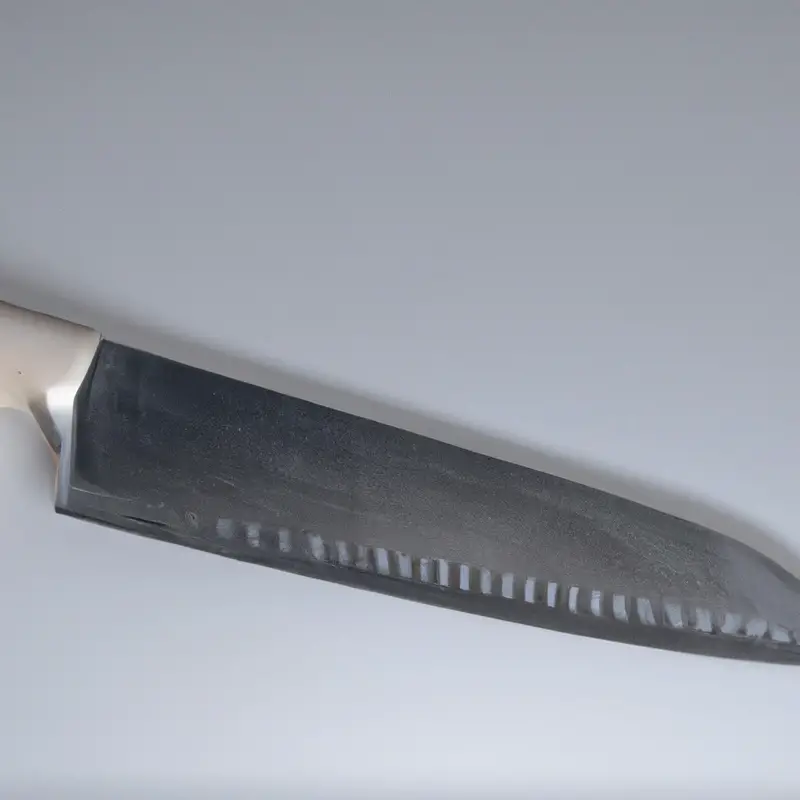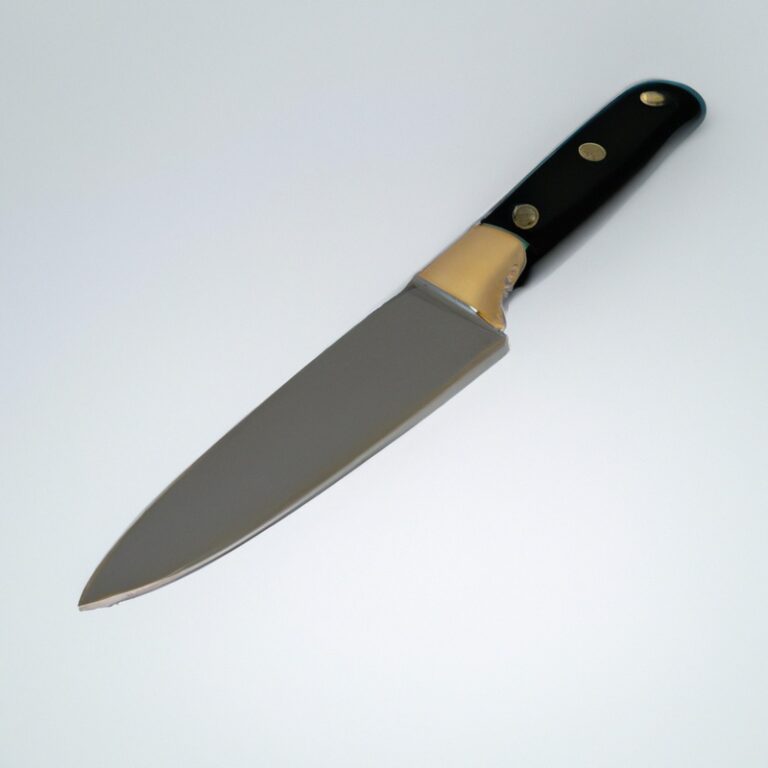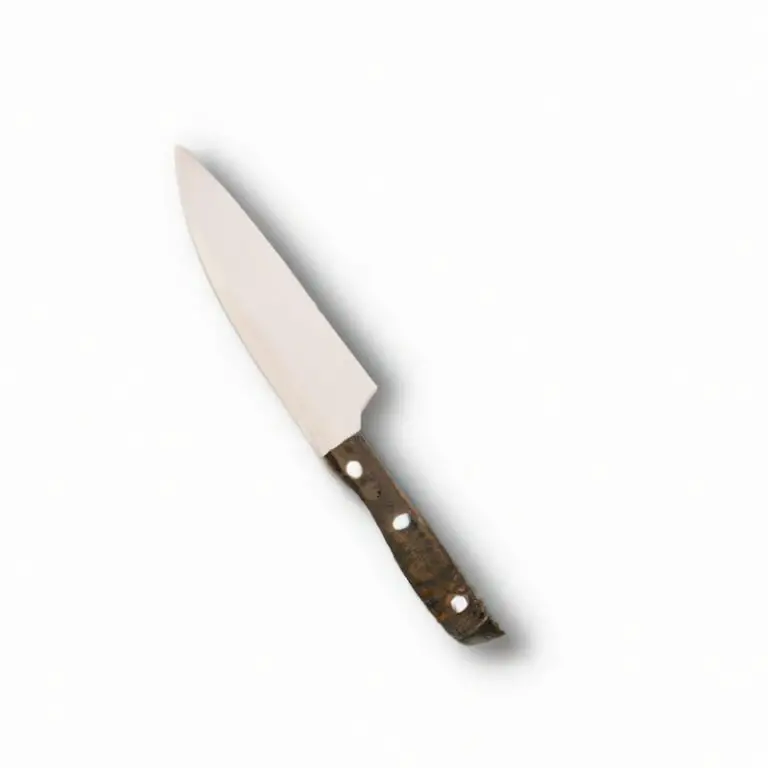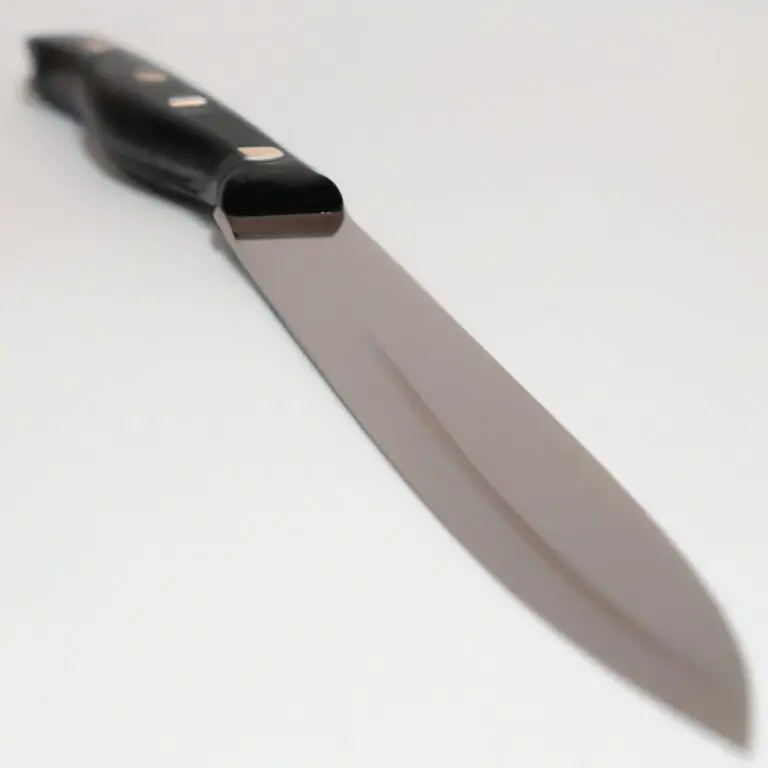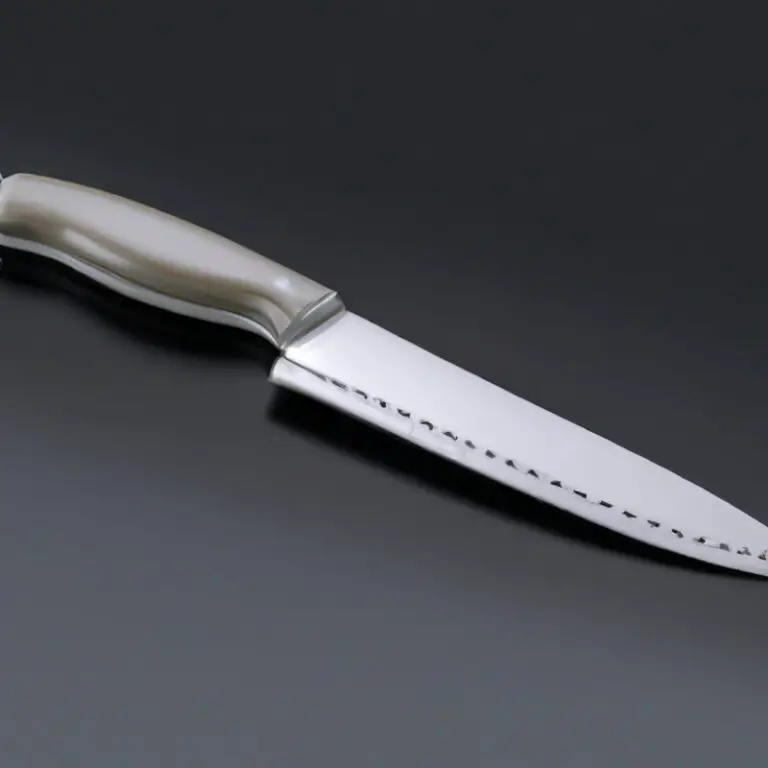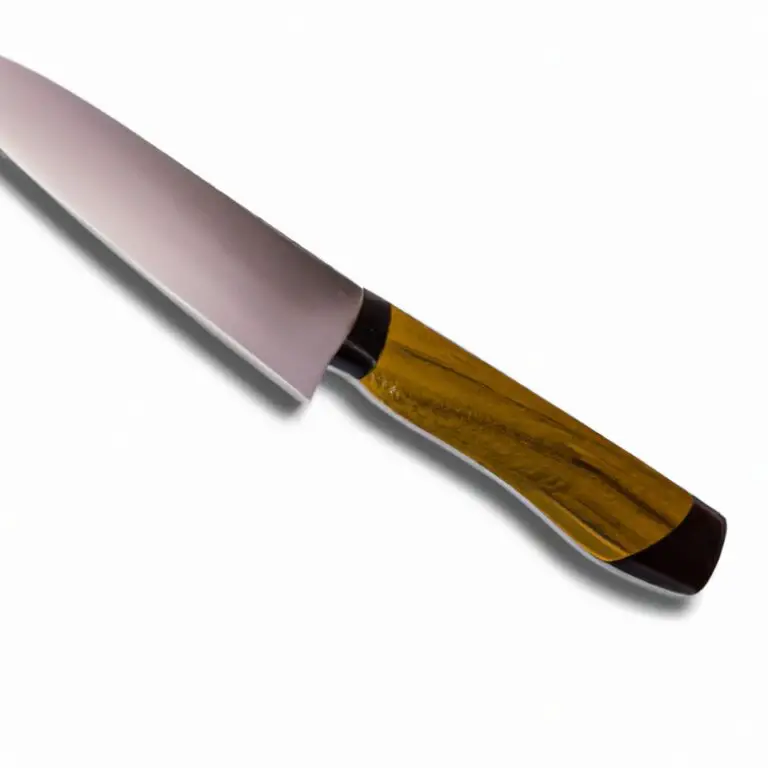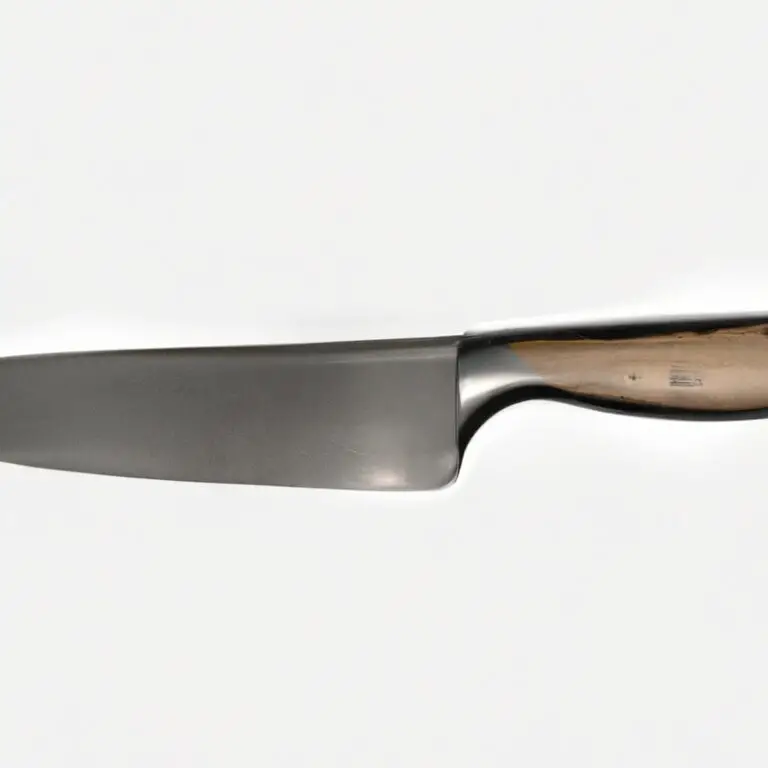What Is The Purpose Of a Heel On a Chef Knife? Unveiled!
Key Takeaways:
- A heel on a chef knife is meant to provide leverage and support for cutting tasks that require more force.
- The heel also helps prevent the hand from slipping onto the blade during use, increasing safety.
- Professional chefs often prefer knives with a heel as it enables them to perform a wider range of cutting techniques with greater ease.
- When choosing a chef knife, consider the size and shape of the heel to ensure it suits your cutting needs.
As a seasoned chef, nothing feels more satisfying than a well-balanced and versatile chef knife. But have you ever wondered what the purpose of the heel on a chef knife is?
You’re not alone! The heel is an essential part of the knife’s anatomy that provides unique benefits in terms of safety, technique, and precision.
In this article, we’ll explore why the heel is crucial in chopping, rocking, and carving, how it provides extra support to your fingers, and why a sturdy and sharp heel is needed to cut through tough meats and vegetables. So, let’s dive in!
| Question | Answer |
|---|---|
| What is a chef knife heel? | The heel is the bottom portion of a chef knife’s blade that is closest to the handle. |
| What is the purpose of the heel? | The heel is used for cutting tasks that require more force, such as chopping through hard vegetables or bone-in meats. |
| Does every chef knife have a heel? | No, not all chef knives have a heel. Some Japanese-style knives do not have a heel and instead have a curved blade that is designed for slicing and chopping with a rocking motion. |
| How should the heel be sharpened? | The heel should be sharpened with a slightly steeper angle than the rest of the blade, as this helps to preserve its durability when chopping through harder materials. |
Knife Anatomy: Understanding the Parts of a Chef Knife
A chef knife is an essential tool in any kitchen, and understanding its anatomy is crucial to use it correctly. A typical chef knife consists of a blade, a handle, a bolster, and a heel.
The blade is the sharpened, flattened part used for cutting.
The handle provides a comfortable grip, while the bolster is the thick section between the blade and the handle that offers balance and support. The heel is the widest part of the blade near the handle, primarily used for heavy-duty tasks such as chopping.
It also acts as a finger guard, protecting your hand from accidental slippage.
A sturdy heel helps in cutting through tough bones and joints, while a sharp heel aids in precise cuts and carving tasks. The size and shape of the heel must be chosen based on individual preferences and hand size.
Knowing these parts and their functions can help you choose the right chef knife for your needs and use it safely and correctly in the kitchen.
Why Heel is Important in Chef Knives
The heel is an essential part of a chef knife as it provides support and stability to your fingers during chopping and rocking techniques. A sturdy heel is necessary to cut through tough foods, while a sharp heel contributes to the overall performance of your knife.
Precision cutting and carving are made possible with the use of the heel, and a rounded heel can significantly improve your comfort while using the knife.
To effectively utilize a chef knife’s heel, it’s crucial to select a knife with a heel that fits comfortably in your hand. As for the future of heeled chef knives, trends and innovations have yet to be seen, but proper care and maintenance of your current kitchen knife will ensure optimal performance.
The Role of the Heel in Rocking and Chopping Techniques
The heel of a chef knife plays a crucial role in rocking and chopping techniques. It is the part of the knife that is in contact with the cutting board, helping to stabilize the blade.
When you rock the blade during chopping, the heel acts as a pivot point, allowing for a smooth and efficient motion.
The heel also provides extra support and control when chopping harder or denser ingredients like bone in meats or vegetables. A sturdy heel is essential for achieving consistent and precise cuts, and can make a significant difference in the overall performance of your knife.
Ultimately, whether you are a professional chef or a home cook, choosing a chef knife with a well-designed heel is key to achieving exceptional results in the kitchen.
Knife Safety: How the Heel Offers Extra Support to Your Fingers
The heel of a chef knife plays a crucial role in offering extra support to your fingers while cutting food items. When you grip the knife handle, your fingers rest against the heel, providing a solid base to prevent any accidental slips or cuts.
The heel controls the knife’s balance and allows you to safely apply pressure when cutting through hard or tough foods, such as meats or vegetables.
It provides a sturdy platform for your fingers to provide additional force, resulting in cleaner and more precise cuts. A well-designed heel is an important factor to consider when purchasing a chef knife and should be chosen according to your hand size and grip to ensure optimum safety while using the knife.
Why a Sturdy Heel is Needed to Cut Through Tough Foods
A sturdy heel on a chef knife is essential for slicing through tough foods such as bones and dense vegetables. The heel provides extra support and leverage, allowing the user to exert more force and pressure on the blade.
This helps to chop and cut through tough materials without damaging the blade, and it also prevents the knife from slipping or bouncing off the food.
A strong heel also provides balance to the knife, ensuring that it remains steady and secure in the user’s hand. If you frequently handle tough foods in your cooking, a chef knife with a sturdy heel is a must-have tool in your kitchen.
How the Heel Can be Used for precision Cutting and Carving
The Heel of a chef knife is an essential part for precision cutting and carving. It is the thickest and strongest part of the blade that helps controlling the movement of the knife while cutting.
When cutting through large, tough foods, the heel provides stability and support to the blade, allowing you to deliver a clean and precise cut.
For precision cutting and carving, the heel is particularly useful when you need to make small, intricate cuts, such as when removing the flesh from bones or filleting fish. By starting the cut with the heel, you can create a clean entry point and maintain control of the blade as you work your way through the food.
As you get closer to the end of the cut, the heel can help stabilize the blade, preventing it from slipping and ruining your work.
In summary, the heel of a chef knife is an indispensable tool for precision cutting and carving. By providing stability and support to the blade, it allows you to make clean and accurate cuts, even when working with tough or delicate foods.
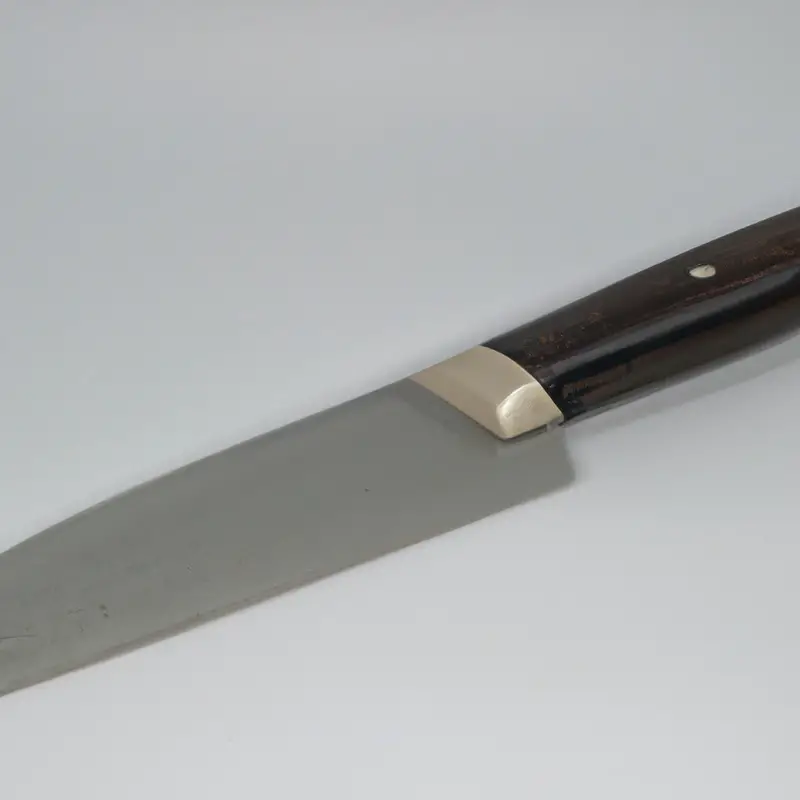
Importance of Choosing a Knife with a Heel Fit for Your Hand
Choosing a knife with a heel fit for your hand is crucial as it ensures a comfortable and secure grip while you work. A well-fitted heel provides better control and reduces the risk of accidents due to slippage.
Additionally, a poorly fitted heel can cause muscle fatigue, leading to discomfort and pain.
It is vital to select a knife that not only complements your skill level and the type of foods you work with but also provides maximum comfort while working. Ultimately, a knife with a well-fitted heel will increase productivity and enhance the overall experience of using your chef knife.
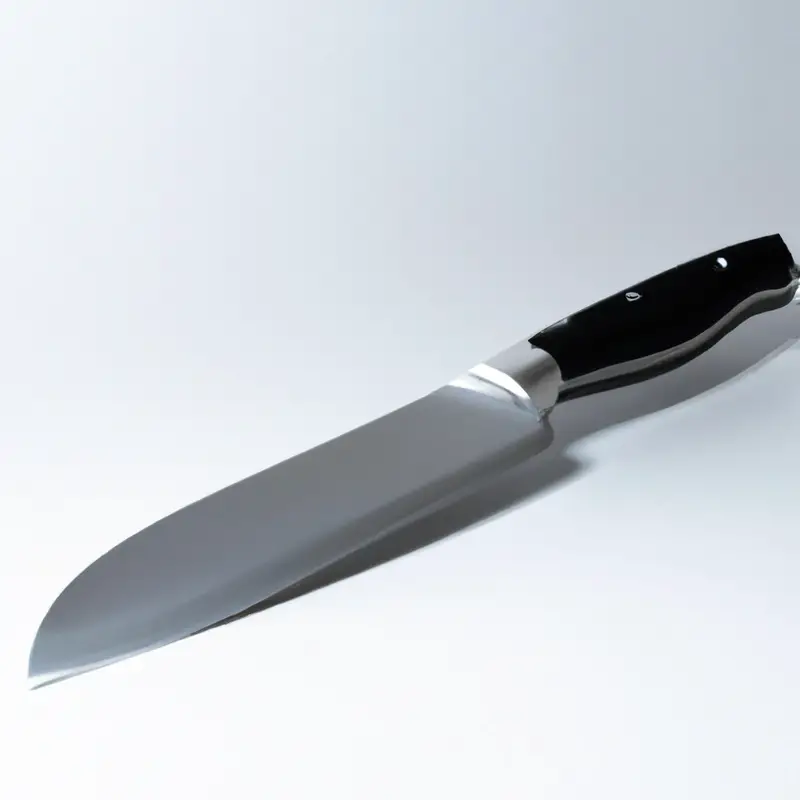
How a Rounded Heel Can Make a Difference in Your Knife Comfort
A rounded heel on a chef knife can significantly improve your comfort level when using it for extended periods. A sharp angle or pointed heel can dig into your palm and cause discomfort.
On the other hand, a rounded heel can provide a smooth transition onto the handle, reducing the pressure on your palm.
It can also allow you to use a pinch grip comfortably, which is vital for precise cuts. Additionally, a rounded heel on your knife can reduce the risk of blisters or calluses forming on your hand.
Thus, if you are looking for a comfortable chef knife that you can use for extended periods, consider opting for one with a rounded heel.
The Impact of a Sharp Heel on the Overall Performance of Your Knife
A sharp heel is crucial for the overall performance of your knife. A dull or poorly sharpened heel can hinder the effectiveness of certain cutting techniques, such as rocking or push cutting.
A sharp heel also provides added stability and control when cutting through tough foods like meat or squash.
Additionally, a sharp heel can enhance precision when making small cuts or intricate designs. It is important to regularly sharpen the heel of your knife to maintain its optimal performance.
A well-maintained sharp heel can make a significant difference in the efficiency and effectiveness of your cutting tasks.
The Future of Heeled Chef Knives: Trends and Innovations
The future of heeled chef knives is looking promising, with several trends and innovations emerging in recent years. One trend is the increased use of high-quality materials such as Damascus steel and ceramic blades, which offer superior durability and sharpness.
Another trend is the use of ergonomic handles, which provide a comfortable grip and reduce hand fatigue during extended use.
In terms of innovation, some companies are developing chef knives with adjustable heels, allowing chefs to customize the size and shape of the heel to fit their specific cutting style. Additionally, some knives are being designed with a curved heel to improve the rocking motion when chopping vegetables, while others are incorporating special divots on the heel for added precision when making small cuts or trimming meat.
Technology is also playing a role in the future of heeled chef knives.
Some knives now come with built-in sensors that can detect when the blade is dull or needs sharpening, while others feature LED lights for improved visibility when cutting in low light conditions. Overall, the future of heeled chef knives is focused on combining traditional craftsmanship with innovative design and technology to create knives that offer unparalleled performance and precision.
As such, chefs are sure to benefit from the continued evolution of this indispensable kitchen tool.
Final Verdict
The heel of a chef knife is a crucial element that provides stability, control, and safety while cutting and chopping different ingredients. From the rocking technique to precision cutting and carving, a sturdy and sharp heel can make all the difference in your cooking experience.
By understanding the anatomy and purpose of the heel, you can choose a knife that fits your hand size, cutting style, and comfort level.
Whether you’re a professional chef or a home cook, investing in a high-quality chef knife with a well-designed heel can significantly improve your performance and reduce the risk of accidents. Remember, the heel is not just a fancy feature, it’s a functional component that deserves attention and care.
So, stay sharp, stay safe, and keep rocking with your favorite heeled chef knife!

